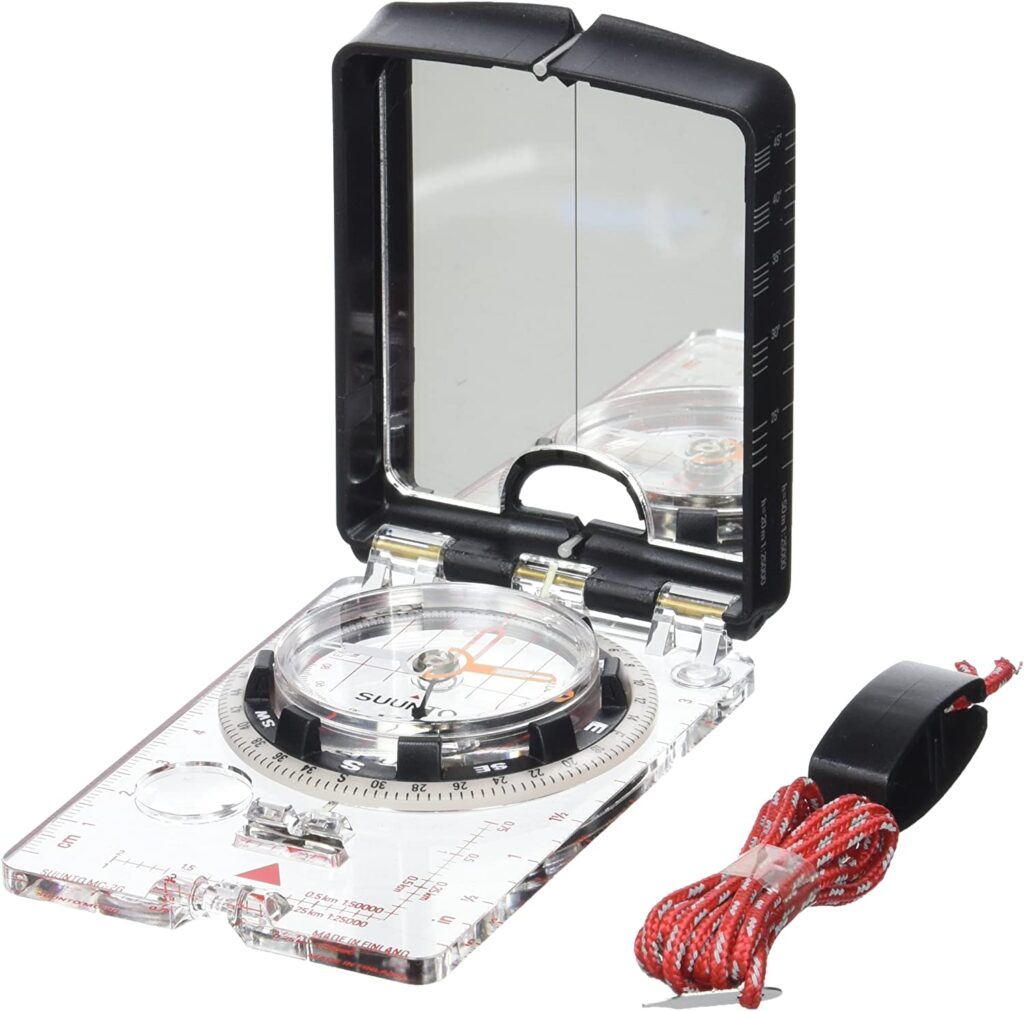Hikers need a compass that can help them stay on the right path. These are some of the best compasses for hiking. It’s vital to know the basics before you buy to choose the right one for your needs.
There are several factors to consider when shopping for a hiking compass.
Some people may think they don’t need a compass because they have a GPS or smartphone. While this might be true, it’s always good to have a backup in case these systems fail. It’s also important to know how to use this device before your trip so it’s effective when in the wilderness.
Here are some of the main types of compasses that people use for hiking:
Suunto MC-2G In Global Compass.
The Suunto MC-2G is arguably the best compass for hiking globally, and it’s built to survive anything you put it through. It offers a global needle, adjustable declination correction, a sighting mirror with a clinometer, a magnifying lens, and an adjustable bezel.
Features I love about the Suunto:
Global needle (use anywhere in the world) – I greatly appreciate this feature since I usually travel out of the country in some way when hiking (e.g., climbing a mountain, walking into another country, etc.)
Baseplate – The base plate helps with being able to draw lines, take bearings, and measure distances easily on maps.
Ruler – The ruler can be used to measure distances on maps.
Magnifying lens – The magnifying lens is excellent for reading small print on maps.
Declination adjustment – With this compass, you can adjust for declination so that you don’t have to make corrections when taking bearings from maps or triangulating your location from two known points (e.g., peaks).
Brunton Truarc15 Compass
Brunton Truarc15 Compass is an advanced compass for all outdoor activities. It’s super durable and waterproof and features several helpful tools like an inclinometer and mirror. It also has a sighting hairline that helps you precisely pinpoint your location.
Cammenga Phosphorescent Lensatic Compass.
The Cammenga Phosphorescent Lensatic Compass is another top-quality compass ideal for hiking, camping, and other outdoor adventures. Like many of the best compasses, this one features sights for pinpointing your location with accuracy and tools for measuring elevation, distance, and angle.
From what I understand, the only difference between a compass and a hiking compass is that a hiking compass has a base plate. The foundation of a map-worthy compass is the clear plastic that houses the actual compass and has straight edges and scales or rulers for use with maps.
In addition to having a baseplate, most hiking compasses have some or all of these additional features:
* Adjustable declination – the difference between true and magnetic north that changes from place to place. A compass with adjustable declination allows you to adjust for this difference for greater accuracy.
* Global needle – the needle in most compasses points to the magnetic north, which is not where you want to go unless your goal is to reach the North Pole. Some compasses have needles that point to the true north instead of the magnetic north.
* Sighting mirror – this feature allows you to take more accurate bearings by making it easier to line up your target with the direction-of-travel arrow on your map while looking through the sighting hole in your compass.
* Clinometer – some compasses have a built-in clinometer, which measures slope angles. This can be useful when deciding whether it’s safe to cross a steep snowfield, for example.
Continue reading: > The Best Compasses + Necessary Hiking Gear You Need To Bring
Chipjourney.com is a participant in the Amazon Services LLC Associates Program, an affiliate advertising program designed to provide a means for sites to earn advertising fees by advertising and linking to amazon.com

